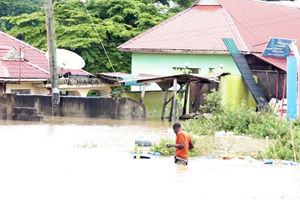Children with cancer deserve special attention on end-of-life care
What you need to know:
Today, I want to point out an important and often missed-out aspect on childhood cancer, which is the end-of-life care for these children.
I have rarely written on childhood cancer and its associated complications. But this doesn’t mean, paediatric cancers are rare as it may sound. Although data are yet to be actualised, cancer has been causing a lot of deaths among children aged 1 to 18 in Tanzania.
Today, I want to point out an important and often missed-out aspect on childhood cancer, which is the end-of-life care for these children.
Judging from my experience, there is a dire need for us [healthworkers] to pay particular attention on end-of-life care for children diagnosed with this deadly disease.
Pain management is an important aspect
The actual figure of children who die with cancer and in pain is still unknown, however, I still suspect that pain management skills by paediatric oncologists may need further improvement.
Many parents who are nursing their children with various types of cancer, complain that the suffering of children dying from cancer has not been adequately relieved and identify pain as prominent concern.
Additionally, a number of attending physicians, residents and nurses are reported that they feel inexperienced in pain management.
In my recent discussion with one of paediatricians at Muhimbili National Hospital (MNH), Dr Sifaeli Mfikwa mentioned that it would be wise if we had indicators to measure the quality of paediatric end-of-life care and enable a comparative analysis across hospitals.
Interventions to improve practice in paediatric end-of-life care may be most effective if adapted individually by each hospital, Dr Mfikwa suggests.
“I therefore think if the field of paediatric palliative care will expand, future studies should focus on monitoring quality indicators across time and diverse settings,” Dr Mfikwa further notes.
Where’s the challenge?
According to a research done by Andrew Rosenblum, he explains opioids have been regarded for millennia as among the most effective drugs for the treatment of pain. Their use in the management of acute severe pain and chronic pain related to advanced medical illness is considered the standard of care in most of the world, especially in palliative care.
But in Tanzania, availability of opioid and use is still controversial. Concerns related to its effectiveness, safety, and abuse have all a part to play.
There are so many other barriers to adequate pain management in the paediatric oncology which may include: difficulties in assessing young children, poor training in pain management, fear of opiod addiction, and the unwillingness of children or parents to acknowledge for fear of what it signifies (recurrent/relapsed disease, hospital visit and death).
Through these obstacles (and others), good pain management, still seems to be ‘a mount to climb’ for us for our paediatric patient with cancer. In addition, to compromise good holistic paediatric care, adequate pain management improves the ability to cope with therapy (both physically and psychologically), improves nutrition and sleep and facilitates healing.
Most importantly, for those whom the journey of cancer will not end with cure, relief of distress from pain at the end of life carries long-lasting implications for bereaved parents who cope much better when their dying children’s pain is well controlled.


